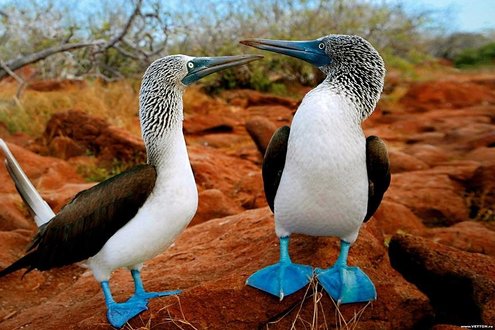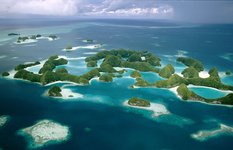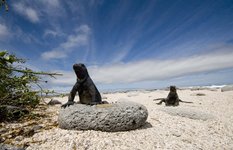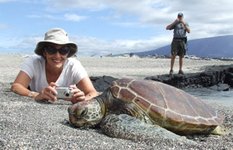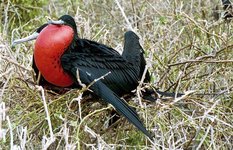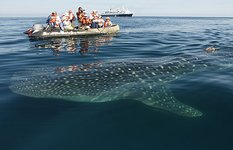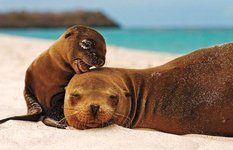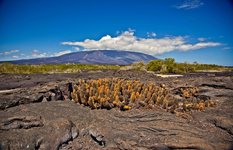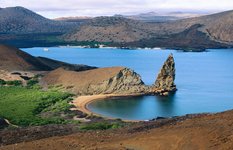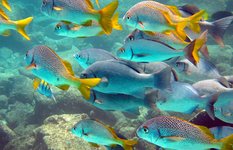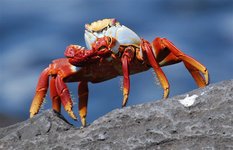 Been there
Been there
 Want to go
Want to go
 Ask friends for recommendations
Ask friends for recommendations
Things to do
Attractions and sights
 View Map
View Map
-
The biggest draw of the Galapagos Islands is the wealth of wildlife, including many animals that are endemic to this cluster of islands. Wildlife unique to the islands includes the Galapagos tortoises, marine iguanas, flightless cormorant, the tiny Galapagos penguin, and the critically endangered Galapagos hawk.

-
Galápagos National Park, established in 1959 and beginning operations in 1968, is Ecuador's first national park and a UNESCO World Heritage Site.

-
There are huge advantages to living on boat while visiting the Galapagos, as opposed to being based on land. Cruise boats by the likes of Ecoventura Southern Explorations and G Adventures take visitors all over the islands and get you closest to the wildlife.

-
The Galapagos Islands have an immensely rich underwater world, where you can dive with whale sharks, manta rays, reef sharks and sea turtles. Scuba Iguana and Tip Top Diving are some of the reputable operators offering underwater adventures for experienced divers only, as diving conditions include strong currents.

-
Snorkeling offers a way to be in the water with fish, sea turtles, sea lions, and other creatures and is a great option for those who don't have scuba certification. Keep in mind that water here can be cold.

-
The Charles Darwin Research Station is a biological research station operated by the Charles Darwin Foundation. It is located in Puerto Ayora on Santa Cruz Island in the Galapagos Islands, with satellite offices on Isabela and San Cristóbal islands.

-
Hiking is often included as part of organized cruises or tours of the highlands. Although you will often see fewer animals during these tours, you will often gain a greater understanding of the difference in terrain and vegetation as well as the formation of the islands. Hiking is restricted in all National Park land, however several sights, like the Wall of Tears on Isabela and Cerro Tijeras on San Cristobal can be hiked independently.

-
The southernmost of the Galapagos Islands, Española has a striking cliff landscape and a nature trail that runs past important birding sites. Española is home to most of the world's waved albatrosses, blue-footed and nazca boobies and colonies of fur seals, and there's great snorkeling to be done at white-sand Gardner Bay.

More attractions
 Hide Map
Hide Map
When to go
| |||||||||||||||||||||||||||||||||||||||||||||||||||||||||||
Best time to go:
December to May is the rainy season, but the water is warmer and the spring months are the best time to see mating birds and animals, as well as baby sea lions. There's better visibility for divers from June to November, but the water is cold and the seas can be rough.
Warning:
Visiting the park is highly regulated. You cannot ramble on your own; you must always be accompanied by a certified guide.
How to get there
By plane from Quito to Seymour or San Cristobal airport, then on a cruise ship. There are no living accommodations in the Galapagos National Park, and you must always be accompanied by a certified guide.
Reviews


